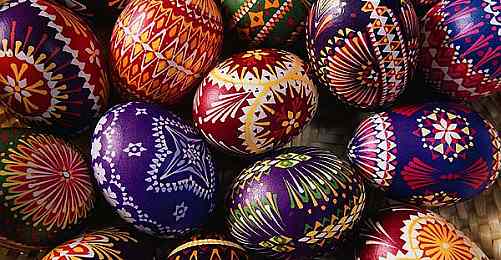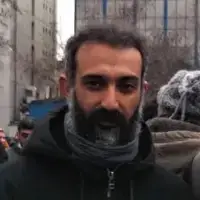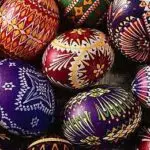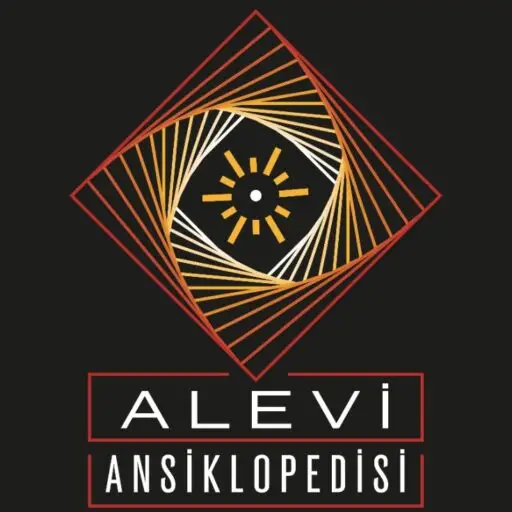Hako Sûr: A Springtime Ritual among Kurdish Alevis & Armenians in Dersim
Hako Sûr (Red Egg Festival)
Hako Sûr, known in English as the Red Egg Festival, is a nearly extinct spring ritual once practised by some Kurdish Alevi communities and their Armenian neighbours in the Dersim region (present-day Tunceli and its surroundings). It represents a syncretic cultural expression rooted in shared seasonal rhythms and is remembered today mostly within the oral traditions of a few families (Gültekin 2018).
The tradition parallels and historically coexisted with Easter (Zatik) celebrations observed by the Armenian Christian population of Dersim. In earlier periods, when the region had a significant Armenian presence, Hako Sûr embodied a form of cultural interaction where shared cosmologies, agricultural cycles, and ritual practices blurred rigid religious distinctions. Although it is no longer practised publicly today, Hako Sûr remains an example of vernacular spirituality shaped by regional coexistence and seasonal change (Gültekin 2018).
Historical and Cultural Context
Dersim has long been home to a diverse ethno-religious mosaic, including Kurdish Alevis, Armenians, Sunni Kurds, and (Sunni & Alevi) Turks. Throughout history, these communities-regardless of their faith or language (Kırmancki [also known as Zazaki], Kurmanci, Turkish, or Armenian)-shared similar economic structures (pastoralism, agriculture), communal lifestyles, and sacred calendars (Gültekin 2019). This resulted in the development of overlapping seasonal rituals and mythological systems, particularly during the winter and early spring months when religious life intensified through fasting, purification, and symbolic renewal.
For Kurdish Alevis in Dersim, this season includes a cycle of rituals such as Gağan, Xızır, Kara Çarşamba, (Qerê Çarseme) and Hawtemal. These practices, many of which trace their roots to ancient Iranian belief systems, coincided with major Christian holidays such as Christmas and Easter, giving rise to ritual and symbolic intersections.
Armenian-Alevi Ritual Entanglements in Dersim
The springtime observance of Hako Sûr is a compelling example of the deep ritual entanglements that once characterised the shared religious landscape of Dersim, particularly between the Armenian Christian and Kurdish Alevi communities. As Robert Moosa (1988) has convincingly demonstrated, the presence of Armenian elements in the beliefs and practices of the Kızılbaş Kurds-especially those inhabiting mountainous regions like Dersim-was not incidental but emerged from centuries of cohabitation, shared economic life, and overlapping ritual calendars.
Ethnographic accounts and oral histories from Dersim indicate that rituals surrounding birth, death, spring renewal, and sacred calendrical events often bore striking resemblances between Armenians and Alevis. For example, the Thursday evening (hêfteya pêncşem)-sacred in Alevi cosmology as a moment of spiritual openness-is also marked in Armenian Christian tradition as the eve of Zatik (Easter), commemorating the Last Supper. Both communities engaged in night vigils, meal-sharing, lighting of lamps or candles, and ritual purification practices during this liminal time. The symbolism of the red egg, central to both Zatik and Hako Sûr, functions in these contexts as a marker of life overcoming death, fertility over dormancy, and renewal after suffering-cosmic themes that transcend doctrinal divisions (Gültekin 2018).
Some older Alevi informants from villages in the Ovacık and Hozat districts recall their grandparents referring to the practice of dyeing eggs in springtime as “a tradition from the old times when we lived with the gavors”-a colloquial term for Armenians that, while historically complex, reflects remembered proximity rather than hostility. In some cases, dyed eggs were exchanged between households, especially in mixed or neighbouring villages, or brought to shared grazing grounds during spring migrations. These practices, often devoid of overt theological interpretation, reveal a vernacular logic of ritual that favoured coexistence and mutual borrowing (Gültekin 2018).
Moreover, both Armenians and Alevis marked the transition from winter to spring with ritual meals that included herbs, dairy, and unleavened bread, as well as collective blessings for livestock and harvest. These parallel seasonal rhythms contributed to the emergence of a shared “sacred ecology”-a form of religiosity anchored in the land, its cycles, and its demands, more than in institutional dogma. In this light, Hako Sûr should not be viewed as an isolated curiosity but as one node in a dense web of local ritual convergences. Moosa’s analysis helps to situate the red egg tradition not only within Armenian liturgical culture but also within a broader history of hybrid sacred time in Dersim, where symbols, gestures, and cosmologies flowed across communal boundaries.
Ethnographic research by Hranoush Kharatyan (2014a & 2014b) and Erwan Kerivel (2016) also reinforces the view that traditions like Hako Sûr emerged within a deeply entangled ritual landscape shaped by Armenian-Alevi coexistence in Dersim. Kharatyan documents how, particularly in the late Ottoman and early Republican periods, entire Armenian communities underwent what she terms “Alevization”-not merely in belief but in social structure, ritual practice, and kinship networks. Armenian villagers adopted ocak-based spiritual lineages, participated in seasonal fasts, and preserved Christian elements like red egg rituals within an Alevi cosmology. These transformations were not abrupt religious conversions but long-term cultural fusions, sustained by shared geographies and mutual participation in rites tied to the land and its seasons. Echoing this, Kerivel rejects rigid ethnic taxonomies, arguing that Dersim’s identity was shaped by cross-breeding between Armenian, Kurdish, Persian, and Turkmen influences. He emphasizes that Alevi identity in Dersim was not solely linguistic or tribal, but constructed through ritual allegiance, kinship to pir lineages, and embodied practices-what he calls a “hybrid structure” deeply rooted in local sacred ecologies. Practices like dyeing red eggs in early spring, preserved by both Armenians and Alevis in different symbolic registers, exemplify how sacred time in Dersim was collectively experienced and ritually performed, even as political histories later fractured these interwoven traditions. Together, these accounts underscore that Hako Sûr is not simply a seasonal ritual but a living trace of Dersim’s once-fluent cultural and religious pluralism.
Ritual Practice
Hako Sûr was typically celebrated in early spring, around the same time as Easter, and reflected the themes of rebirth, renewal, and communal sharing. Red-dyed eggs formed the centrepiece of the tradition, symbolising the renewal of life in nature, and, in Christian theology, the blood of Christ and resurrection. Among Alevis, this symbolism evolved into a more nature-based and seasonal celebration, dissociated from strict theological interpretations.
The rituals often began on Thursday evening, a sacred day in Alevi religious life, which parallels Maundy Thursday in Christian practice-commemorating the Last Supper. Rituals included shared meals, exchange of eggs, and communal gatherings. Red eggs would be dyed and gently tapped against each other in a friendly contest, where the loser would gift their egg to the winner, sometimes with an accompanying blessing or humorous gesture.
These events also reinforced neighbourly ties and cohabitation, with Armenian and Alevi families sometimes joining in or observing similar customs side by side. This cultural proximity exemplifies a broader pattern of symbolic borrowing and ritual convergence that has long defined Dersim’s religious landscape.
Oral Histories and Continuities in Exile
Field research and oral history accounts show that Hako Sûr not only survived in Dersim but also continued to be practised in various forms during periods of migration and exile. As documented in Kazım Gündoğan’s book Alevileştirilmiş Ermeniler (2022), some of the 72 interviews he conducted with Alevi or Alevi-converted Armenians reveal that the egg-dyeing tradition was remembered and maintained across generations and locations. These testimonies show that the ritual functioned not merely as a seasonal spring custom tied to the calendar, but also as a means of safeguarding identity, belonging, and communal solidarity in daily life.
Perus Salik (b. 1938) recalls: “I came to Mazgirt as a married woman. There, too, some people excluded me. But overall, we felt more comfortable. They knew we were Armenians. We dyed eggs and prayed.”
The tradition even survived during the years of exile in Western Anatolia: “In exile, my parents performed their religious services in their own homes. In this village in Uşak, in accordance with their Christian faith, they took out their crosses and prayed towards the sun. On holidays, they honoured their own traditions. For example, they celebrated an egg festival, they baked doughnuts… They did all this in secret; no one else knew about it.”
It appears that Dersim Armenians also dyed eggs on holidays other than Easter: “On Hıdırellez, my mother brought us eggs, roast meat, and oil. We went to the countryside, cooked, and dyed the eggs. We gave eggs and rolls to our friends.”
Sengül Gündoğdu Devletli (b. 1961) describes how her parents concealed their language and rituals: “When they spoke Armenian, they did so secretly so that we couldn’t hear them. I think they did it out of fear. They locked the door so that no one could hear them, believing that ‘the earth has ears’. On the other hand, they let us celebrate Gağant, for example, and they also let us celebrate Easter. But they didn’t say, ‘This is Easter, this is an Armenian holiday.’ They dyed the eggs with onion skins and brought them to us in a bundle with various other things, such as bread rolls. We celebrated it in a rural area, eating and drinking as if it were a holiday in the countryside. Later, of course, we realised that this was ‘celebrating Easter’.”
These testimonies demonstrate that Hako Sûr and similar egg-dyeing rituals were maintained with flexibility in both place and timing-sometimes as a seasonal custom detached from explicit religious identity, and at other times as a quiet way of preserving identity under conditions of secrecy.
Contemporary Status and Memory
In the 21st century, Hako Sûr has almost entirely faded from active practice. The demographic and political ruptures of the 20th century-including forced displacements, massacres, and cultural suppression-led to the erosion of shared rituals in Dersim like this. Today, Hako Sûr exists primarily as a memory preserved within a few households, mentioned in oral histories or family anecdotes.
Despite its disappearance from collective observance, Hako Sûr offers critical insight into the cultural intimacy that once shaped the intercommunal life of Dersim. It also reminds us of the vernacular, nature-bound dimensions of Kurdish Alevi ritual life-dimensions that extend beyond formal theology and institutionalised religion, rooted instead in seasonal cycles, domestic ritual, and lived coexistence.
Conclusion
Hako Sûr, though largely forgotten today, stands as a powerful reminder of the deep interconnections that once shaped the religious and cultural life of Dersim. As a seasonal ritual shared across communal boundaries, it reflected not only the rhythms of nature but also the fluidity of local cosmologies where Alevi and Armenian traditions coexisted and interacted. This practice also serves as a compelling example of Dersim’s long-standing cultural pluralism-its capacity to host, over centuries, a mosaic of languages, religions, and traditions that often blended rather than conflicted. The disappearance of Hako Sûr highlights the fragility of such vernacular heritage in the face of displacement and historical rupture. Yet, its survival in cultural memory invites renewed interest in the everyday sacred, encouraging further exploration of how rituals-however small or local-can illuminate broader histories of coexistence, resilience, and shared sacred time.
References & Further Readings
Gültekin, Ahmet Kerim. 2018. “Alevi – Kürt Paskalyası”, Cumhuriyet – Pazar, April 8, 2018.
Gültekin, Ahmet Kerim. 2019. “Kurdish Alevism: Creating New Ways of Practicing the Religion.” Working Paper Series of the HCAS “Multiple Secularities – Beyond the West, Beyond Modernities”, no. 18. Leipzig: Leipzig University.
Gündoğan, Kazım. 2022. Alevileştirilmiş Ermeniler. İstanbul: Ayrıntı Yayınları.
Kharatyan, Hranoush. 2014a. “The Search for Identity in Dersim – Part 1: Identities in Dersim.” Repair Future”. https://repairfuture.net/index.php/en/identity-standpoint-of-armenia/the-search-for-identity-in-dersim-part-1-identities-in-dersim-armenian
Kharatyan, Hranoush. 2014b. “The Search for Identity in Dersim – Part 2: The Alevized Armenians in Dersim.” Repair Future. https://repairfuture.net/index.php/en/identity-standpoint-of-armenia/the-search-for-identity-in-dersim-part-2-the-alevized-armenians-in-dersim-armenian
Kerivel, Erwan. 2016. “Dersim Alevism, a Cross-Bred Identity.” New Eastern Politics, December 6. Archived at: https://repairfuture.net/index.php/en/identity-other-standpoint/dersim-alevism-a-cross-bred-identity
Moosa, Matti. 1988. “Armenian Elements in the Beliefs of the Kizilbash Kurds.” In Extremist Shiites: The Ghulat Sects, edited by Matti Moosa, 432-447. Syracuse, NY: Syracuse University Press.




